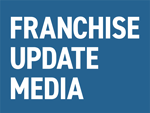New Tariffs Take Effect: What Franchisors and Franchisees Need to Know

On February 1, 2025, President Donald Trump issued three executive orders, which included a 25% tariff on imports from Canada and Mexico and a 10% tariff on imports from China. 1The tariffs were imposed under the International Emergency Economic Powers Act (IEEPA), 2citing illegal immigration and fentanyl trafficking as the reasons for the emergency, based on data from the U.S. Drug Enforcement Administration reporting that Mexico and China are the primary sources of fentanyl.3
On February 3, 2025, President Trump announced a temporary pause on the IEEPA tariffs on goods from Canada and Mexico, delaying the measures until March 4, 2025 to allow time for further negotiations, but the executive order imposing 10% tariffs on all goods from China took effect as announced on February 4. Canada responded by halting its planned retaliatory tariffs, but on February 4, 2025 the People’s Republic of China announced retaliatory tariffs, which began on February 10, 2025. These tariffs target a range of goods, including 15% tariffs on coal and liquefied natural gas, 10% tariffs on crude oil, agricultural machinery, large displacement cars, and pickup trucks.4
On March 3, 2025, Trump announced that the 25% tariffs on goods from Canada and Mexico would move forward, along with an additional 10% tariff on goods from China. The tariffs went into effect on March 4.5
China responded by announcing additional retaliatory tariffs of 10%-15% on a variety of U.S. agricultural imports, including chicken, pork, soy and beef, starting next week. 6Canada also announced it will impose immediate 25% tariffs on more than $20 billion worth of U.S. goods and tariffs on an additional $86 billion of U.S. goods will become effective in three weeks.7
In addition, on February 10, 2025, President Trump signed two proclamations expanding the Section 232 tariffs on steel and aluminum imports8 to ensure that all steel imports are subject to the tariffs and increasing the Section 232 tariffs on imports of aluminum from 10% to 25%.9 The proclamation terminates the exclusion process immediately and revokes all current alternative arrangements under Section 232, effective March 12, 2025.
A day after the March 4, 2025 IIEPA tariffs went into effect, U.S. automakers who were dissatisfied put pressure on President Trump, who temporarily granted a one-month exemption on auto-tariffs on Mexico and Canda. President Trump also suspended tariffs on all imports that are compliant with the United States-Mexico-Canada Agreement (USMCA) until April 2, 2025.
Franchising Impacts
Many franchised brands in different industries will be impacted by this tariff activity. Restaurant operators, in particular, could face significant supply chain disruptions and massive cost increases, especially coupled with an ongoing egg shortage.10 Companies with limited supply chain diversification are at even greater economic risk from these tariffs.11
IEEPA Tariffs
Among other things, imports from Mexico will be heavily impacted by the IEEPA tariffs.12 The top 10 food and beverage imports from Mexico in 2023 included items integral to many brands, including beer, alcoholic beverages, fresh fruits, dates/figs/pineapples/avocados, fresh or chilled vegetables, fresh or chilled tomatoes, baked goods, fresh or chilled beef, sugar confections, and preserved fruits and nuts.13 Indeed, one of the most popular food imports from Mexico are avocados, which many restaurant chains like to charge extra for as a food topping. From June 2023 to June 2024, the U.S. imported more than 2.4 billion pounds of Mexican Hass avocados.14 On its February earnings call, Chipotle, which sources many ingredients from Mexico such as avocados, estimated the tariffs would increase costs by approximately 60 basis points, while Shake Shack echoed similar concerns.15 Chipotle says it will absorb the costs and not raise prices.16
Canada also exports substantial agricultural goods to the U.S. (approximately $40.5 billion in agricultural goods annually), including $1.7 billion worth of frozen potatoes and French fries. 17The top 10 food and beverage commodity imports in 2023, in order of volume, included baked goods/pastries; rapeseed/mustard/colza oil; fresh or chilled beef; chocolate and cocoa-based foods; frozen prepared or preserved vegetables; crustaceans such as shrimp or crab; “other miscellaneous food preparations”; pork; fresh or chilled vegetables; and fresh or chilled fish.18 (According to a November 2024 assessment by the NRA, the top three food and beverage goods imported from Canada include baked goods and pastries; rapeseed, mustard or colza oil; and fresh or chilled beef, which total over $12 billion combined.)
In response to the pending tariffs, Tim Hortons, one of the largest brands to come out of Canada, announced it would be looking into other Canadian suppliers for items currently sourced from the United States.19
Restaurant equipment costs will also rise. For example, Peer Traeger sources about 80% of its grills from China and has significant exposure.20 To put this in perspective, the U.S. imported $120 billion worth of electronics and $81 billion worth of machinery in 2023 according to the Peterson Institute for International Economics.21
Beyond food service, other franchise sectors will also be affected.
The automobile dealership industry depends heavily on parts and manufacturing from China, Mexico, and Canada and these tariffs could have significant impact on U.S. dealers. Mexico plays a central role in the U.S. auto industry. Under both the North American Free Trade Agreement (NAFTA) and the U.S.-Mexico-Canada Agreement (USMCA), Mexico has become a key location for vehicle production due to lower costs. Mexico exports 86.9% of its auto parts to the U.S. while importing 49.4% of all auto parts from the U.S., according to the International Trade Administration. Nearly every major automaker operating in the U.S. has at least one plant in Mexico, including the top six selling automakers, which together accounted for more than 70% of U.S. sales in 2024.
Canada is a significant exporter of cars to the U.S. In 2022, Canada exported $27 billion worth of cars to the U.S. Five automakers — Ford, GM, Stellantis, Toyota Motor and Honda — produced an estimated 1.3 million light-duty vehicles in 2024 in Canada, largely for the U.S. market, according to Canadian manufacturing nonprofit research group Trillium Network.
Car manufacturers and dealerships in the United States will be greatly affected by the tariffs. Wells Fargo estimates that 25% tariffs on Mexico and Canada could cost the traditional U.S. automakers billions of dollars annually.22
Section 232 Tariffs
As all steel imports are subject to a 25% tariff and aluminum tariffs increase from 10% to 25% under the expanded Section 232 tariffs, both franchise operations and construction will likely be affected. For example, construction of buildouts for franchised businesses as well as appliances containing steel and aluminum will be affected.23 Fitness chains, who must purchase initial and upgraded equipment containing these materials, will face higher prices. Franchisees purchasing cans of perishable foods or beverages in aluminum cans will likely pay a higher cost to import such products. Some food and beverage giants have already announced potential product changes as tariff threats loom. In response to Trump’s 25% tariffs on steel and aluminum, for example, Coca-Cola said it would likely sell more of its sodas in plastic bottles.24
The IEEPA and Section 232 tariffs are additive, meaning that those tariffs will apply to subject imports in addition to regular duties and any other special duties, such as the Section 301 tariffs that apply to certain goods from China.25 For example, Chinese imports of battery parts (non-lithium-ion batteries), which are currently subject to 25% Section 301 tariffs, will now be subject to the 10% IEEPA tariffs in addition to the 25% Section 301 tariffs—a 35% cumulative tariff. Suppliers located in Canada, Mexico, and China who are facing tariffs as well as United States suppliers shipping goods to one of these countries that face any retaliatory tariffs could also be impacted by the potential trade war.
Just like franchisors and franchisees have had to re-evaluate costs in the wake of Covid, supply chain disruptions, and increasingly high inflation in recent years, franchisors and franchisees must consider the reliability of Item 7 of the Franchise Disclosure Document and other investment information in their current analysis of start-up costs and consider the necessity of updating Item 7 cost information when evaluating construction costs and goods and equipment costs that will likely as a result of the tariffs increase the total investment for a franchisee. Likewise, any Item 19 financial performance representations that includes operating costs—like food and equipment for a restaurant concept, will need to address potential increase in costs.
Proactive Measures
Franchisors can take the following proactive steps to mitigate tariff impact:
- Supplier Diversification / Explore New Markets: Franchisors should explore alternative suppliers, including domestic and non-tariffed foreign sources. While many equipment and technology manufacturers are based in China, nearby countries such as Taiwan and Indonesia may provide similar factory alternatives to avoid tariffs.
- Menu adjustments: Adjusting menus to emphasize local ingredients may reduce reliance on imported goods.
- Long-term Contracts: Locking in pricing through long-term supplier contracts can help stabilize costs before tariffs escalate further.
- Reviewing Supply Contracts: Franchisors and franchisees should review their supply contracts to determine who bears tariffs costs and (re)negotiate terms where possible.
- Dynamic Pricing Provisions: Long-term supply contracts should be keenly negotiated with considerations for dynamic pricing provision indexes (e.g., a 10% increase in duties triggers renegotiation). Define who bears the cost – supplier, buyer, or split – and set timelines for notice and adjustment.
- Key Contract Provisions - Force Majeure 26, Termination, Indemnification: Provide yourself with the ability to terminate a contract without penalty should tariffs and political uncertainty escalate abruptly.
- Origin of Goods: Require suppliers to certify the country of origin for goods, ensuring compliance with tariff rules and avoiding penalties for misclassification. This is critical under U.S. customs law, where misstated origins can lead to fines. Certain imported goods that are country of origin China (e.g., tomatoes) may also be targets of Uyghur Forced Labor Prevention Act (UFLPA) forced labor detentions and seizures.
- Currency and Payment Terms: Address exchange rate risks if tariffs strengthen the dollar, impacting international suppliers.
- Delivery and Risk of Loss: Clarify when title and risk transfer (e.g., FOB shipping point or destination), especially if tariffs delay customs clearance. This prevents ambiguity over who pays if goods are held up by new duties.
- Insurance Protection: Franchisors and franchisees manage risk by looking into insurance products such as trade disruption insurance, contract frustration insurance, and expropriation insurance.
- Import Strategy Adjustments: Importing parts (of a product) separately that can be declared at a lower value and then assembling the parts in the United States may reduce overall tariff costs. A company may also want to import equipment without the software pre-installed on the equipment in order to bring down the value of goods to minimize duty implications and then install the software after importation.
Polsinelli’s Global Franchise and Supply Network Practice and International Trade Group are here to assist you to navigate these challenges. You can contact Joyce Mazero ([email protected]), Josh Goldberg ([email protected]), and Deanna Okun ([email protected]) for further information.
1 White House, Fact Sheet: President Donald J. Trump Imposes Tariffs on Imports From Canada, Mexico and China (February 1, 2025) (Notably, energy imports from Canada will face a reduced 10% tariff).
2 The President may use IEEPA (50 U.S.C. §§ 1701 et seq.) “to deal with any unusual and extraordinary threat, which has its source in whole or substantial part outside the United States, to the national security, foreign policy, or economy of the United States,” id., provided the President first declares a national emergency with respect to that threat under the National Emergencies Act (NEA) (50 U.S.C. §§ 1601 et seq.). Congressional Research Service, The International Emergency Economic Powers Act (IEEPA), the National Emergencies Act (NEA), and Tariffs: Historical Background and Key Issues (Feb. 3, 2025).
3 Drug Enforcement Administration, National Drug Threat Assessment 2024 (May 2024).
4 SCTC Notification No. 1/2025 dated February 4, 2025, (in Chinese) (can translate to English).
5 White House, Fact Sheet: President Donald J. Trump Proceeds with Tariffs on Imports from Canada and Mexico, (March 3, 2025); Hours after the tariffs went into effect, U.S. Commerce Secretary Howard Lutnick told Fox Business news that President Trump may come to a compromise with Canada and Mexico as soon as Wednesday March 4, 2025 (foxbusiness.com/video/6369607232112).
6 Asma Khalid and Rebecca Rosman, Canada and China retaliate after Trump's tariffs take effect (March 4, 2025)
7 Id.
8 In March 2018, following an investigation and report by the U.S. Department of Commerce on the effect of imports of steel and aluminum on the national security under Section 232 of the Trade Expansion Act of 1962 (19 U.S.C. § 1862), President Trump imposed the Section 232 tariffs on imports of steel and aluminum. See Proclamation 9704 of March 8, 2018: Adjusting Imports of Aluminum Into the United States, 83 Fed. Reg. 11619 (Mar. 15, 2018); Proclamation 9705 of March 8, 2018: Adjusting Imports of Steel Into the United States, 83 Fed. Reg. 11625 (Mar. 15, 2018).
9 White House, Fact Sheet: President Donald J. Trump Restores Section 232 Tariffs, (Feb. 11, 2025)
10 Independent restaurants and chains with large breakfast menus are already dealing with higher egg prices, with Waffle House adding a 50-cent surcharge per egg earlier this month. See Julie Littman, Waffle House adds 50-cent surcharge due to egg shortage, Restaurant Dive (Feb. 4, 2025)
11 For example, 8th Avenue Food & Provisions, Inc., imports durum wheat from Canada and 15% of its total peanut butter volumes are produced by two plants in Canada, which will cause importers of these commodities to face higher costs, if universal tariffs are implemented Id.
12 This is affecting companies like Constellation Brands Inc., which relies on Mexican beer imports for more than 75% of its U.S. beer sales, and similar companies. S&P Global, Tariffs Will Hurt U.S. Consumer And Retail And Restaurant Companies--To Varying Degrees, And Depending On The Subsector, (February 13, 2025)
13 See Kelso.
14 Avocado Institute of Mexico, Long-Term Economic Growth for U.S. and Mexico Fueled by Mexican Avocado Imports (December 12, 2024)
15 Joanna Fantozzi, Policy on the Menu: How Trump’s tariffs will affect foodservice costs, Nation’s Restaurant News (February 25, 2025)
16 Joanna Fantozzi, Chipotle does not plan to raise prices to offset costs from Trump tariffs, Nation’s Restaurant News (March 3, 2025)
17 Melissa Repko et al., Here are the products and companies most at risk from Trump’s tariff plans, CNBC (Updated February 3, 2025)
18 Alica Kelso, The restaurant industry is ‘closely monitoring’ President Trump’s tariffs, Nation’s Restaurant News (Feb. 3, 2025)
19 Nathan Bawaan, As Trump tariffs loom, Tim Hortons scrambles to find Canadian suppliers, The Star (Feb. 13, 2025)
20 See S&P Global n.6.
21Jonathan Maze, New tariffs on Canada, Mexico and China could drive up costs for restaurants, Restaurant Business Online (Feb. 2, 2025)
22 Michael Wayland, Trump’s 25% tariffs on Mexico and Canada to challenge the global auto industry, CNBC (Feb. 1, 2025)
23 Imported derivative products of steel and aluminum made of steel melted and poured in the U.S. and aluminum smelted in the U.S. are exempt from the expanded Section 232 tariffs. See Proclamation 10895 of February 10, 2025: Adjusting Imports of Aluminum Into the United States, 90 Fed. Reg. 9807 (Feb. 18, 2025); Proclamation 10896 of February 10, 2025: Adjusting Imports of Steel Into the United States, 90 Fed. Reg. 9817 (Feb. 18, 2025).
24 Amelia Lucas, Coca-Cola says it will sell more soda in plastic bottles if aluminum tariffs take effect, NBC Los Angeles (Feb. 11, 2025)
25 Notice of Modification: China's Acts, Policies and Practices Related to Technology Transfer, Intellectual Property and Innovation, Federal Register (September 18, 2024)
26 Force majeure is a defense to nonperformance. Courts have generally rejected “force majeure” clause arguments to justify nonperformance for tariff related cost increases. As force majeure clauses are narrowly construed, a court is more likely to accept a force majeure argument where the contract expressly sets forth the specific condition – such as “increased tariffs, duties or related costs,” – to explicitly trigger a force majeure provision. See In re Old Carco LLC, 452 B.R. 100, 119–20 (Bankr. S.D.N.Y. 2011) (enforcing force majeure clause for “changing economic conditions” because “[e]xpress inclusion of the clause change to economic conditions as an excusing event in the 2000 Agreement evidences the intention of the Parties to use a broader force majeure concept”). Parties can protect themselves through dynamic pricing indexes as mentioned in No. 5, and draft termination language that considers changes in economic conditions and increases in tariffs and duties, to provide for explicit termination rights to mitigate risk.
Joyce Mazero (Global Franchise Supply Network Co-Chair), Josh Goldberg (Associate), and Deanna Okun (International Trade Commission Section 337 Litigation & Remedies Trade Chair) are with the law firm Polsinelli.
Share this Feature
Recommended Reading:
| ADVERTISE | SPONSORED CONTENT |
FRANCHISE TOPICS
- Multi-Unit Franchising
- Get Started in Franchising
- Franchise Growth
- Franchise Operations
- Open New Units
- Franchise Leadership
- Franchise Marketing
- Technology
- Franchise Law
- Franchise Awards
- Franchise Rankings
- Franchise Trends
- Franchise Development
- Featured Franchise Stories
| ADVERTISE | SPONSORED CONTENT |








 The franchise listed above are not related to or endorsed by Franchise Update or Franchise Update Media Group. We are not engaged in, supporting, or endorsing any specific franchise, business opportunity, company or individual. No statement in this site is to be construed as a recommendation. We encourage prospective franchise buyers to perform extensive due diligence when considering a franchise opportunity.
The franchise listed above are not related to or endorsed by Franchise Update or Franchise Update Media Group. We are not engaged in, supporting, or endorsing any specific franchise, business opportunity, company or individual. No statement in this site is to be construed as a recommendation. We encourage prospective franchise buyers to perform extensive due diligence when considering a franchise opportunity.